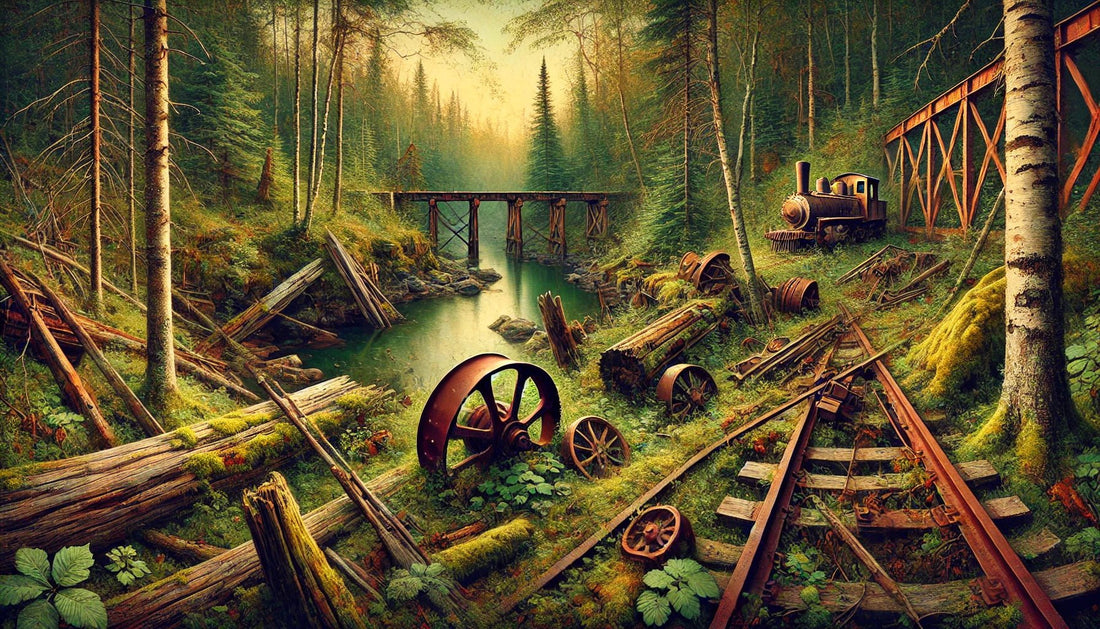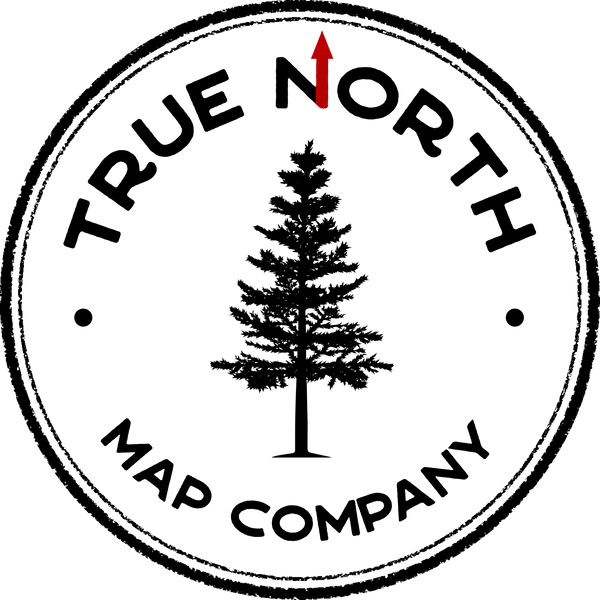
Logging and Mining History in the Boundary Waters Canoe Area Wilderness
Jerod ArlichShare
Introduction
The Boundary Waters Canoe Area Wilderness (BWCAW) is renowned for its unspoiled natural beauty, but its serene landscape hides a rugged industrial past. For decades, the region’s vast forests and rich mineral deposits were heavily exploited by logging and mining industries. Today, remnants of these industries remain scattered across the wilderness, serving as poignant reminders of a bygone era. This blog explores the history of logging and mining in the BWCAW and highlights the relics visitors can still see today.
The Early Logging Era
In the late 19th and early 20th centuries, the forests of northern Minnesota were among the most sought-after resources in the United States. The logging boom was fueled by a growing demand for timber to build railroads, homes, and factories across the Midwest and beyond.
Logging operations in the Boundary Waters relied on a combination of human labor, horse-drawn sledges, and eventually steam-powered equipment. Timber was felled during the winter and transported via rivers and railroads to sawmills. This relentless activity reshaped the landscape, leaving scars on the wilderness. However, by the mid-20th century, the depletion of old-growth forests and increased conservation efforts led to a decline in logging activity.
Logging Relics in the Wilderness Today
Despite the cessation of large-scale logging, remnants of the industry endure in the Boundary Waters. Visitors may come across relics like:
• Old Logging Camps: Scattered throughout the area, these camps once housed workers who spent months felling trees and hauling timber.
• Railroads and Trestles: Abandoned rail beds and wooden trestles built to transport logs are visible in several locations. Some trails even follow the paths of these old railroads.
• Rusting Tools and Machinery: Axes, saw blades, and steam-powered equipment occasionally appear along trails and portages, preserved by the wilderness environment.
These relics serve as open-air museums, offering a glimpse into the lives of loggers and the immense scale of their operations.
Mining in the Boundary Waters Region
The Boundary Waters’ rich geological deposits also attracted miners in the late 19th and early 20th centuries. The region held reserves of iron ore, copper, and other valuable minerals. Early mining operations were small-scale, but technological advancements enabled deeper excavations and larger yields.
Mining camps sprung up in the area, with some operations leaving significant scars on the land. However, by the mid-20th century, growing awareness of environmental degradation led to stricter regulations and the eventual cessation of mining within the Boundary Waters.
Mining Relics in the Boundary Waters
Mining relics, like their logging counterparts, remain scattered across the wilderness. These include:
• Abandoned Mines: Visitors might encounter entrances to long-defunct mines, often obscured by vegetation.
• Mining Equipment: Rusted carts, rails, and other machinery can be found near former mining sites.
• Rock Piles and Tailings: Piles of excavated rock serve as lasting evidence of the region’s mining history.
While these artifacts are fascinating, visitors should exercise caution near abandoned mines due to potential safety hazards.
The Shift to Conservation
By the mid-20th century, conservationists recognized the need to protect the Boundary Waters from further industrial exploitation. Landmark legislation, such as the Wilderness Act of 1964 and the Boundary Waters Canoe Area Wilderness Act of 1978, restricted logging, mining, and motorized activities in the region.
These efforts marked a pivotal shift in the region’s history, transforming it from an industrial hub to a protected wilderness area cherished by outdoor enthusiasts and environmentalists.
Stories of Industrial Relics in Modern Exploration
For many visitors, encountering relics of the logging and mining eras is an unexpected highlight of their Boundary Waters experience. Canoeists paddling along remote waterways might stumble upon an abandoned logging trestle, while hikers exploring forest trails could discover rusting tools or remnants of mining operations.
These artifacts not only tell stories of the region’s industrial past but also underscore the resilience of nature, which has slowly reclaimed much of the land. Efforts to preserve these relics as part of the Boundary Waters’ history ensure they remain accessible to future generations.
Conclusion
The Boundary Waters Canoe Area Wilderness is a place where nature and history coexist. The remnants of logging and mining industries offer a tangible connection to the region’s past, reminding us of the balance between resource extraction and conservation. As visitors marvel at these relics, they also witness the enduring power of the wilderness to heal and thrive.
By respecting these historical artifacts and the natural beauty that surrounds them, we honor both the workers who shaped this land and the conservationists who fought to protect it.
FAQs
1. What logging relics can visitors see in the Boundary Waters today?
Visitors may find abandoned logging camps, railroads, trestles, and rusting equipment throughout the wilderness.
2. Are any abandoned mines accessible to visitors?
While some abandoned mines can be spotted, caution is advised when exploring these sites due to safety risks.
3. How did logging and mining activities impact the Boundary Waters?
These industries altered the landscape significantly, but conservation efforts have allowed nature to recover over time.
4. Why is it important to preserve industrial relics in the BWCAW?
These relics provide valuable insights into the region’s history and serve as a reminder of the balance between human activity and environmental stewardship.
5. Can you still see evidence of railroads in the Boundary Waters?
Yes, remnants of old railroads and trestles built for logging operations are visible along some trails and portages.
